Recognize scammers!Below is a post from the 'Next Door' app as information on preventing and responding to damage caused by scammers.
0 Comments
Beware of Scam from Paypal When you aren't sure if a message that appears to be from PayPal is really from us, don't click on any links, call any listed phone numbers, or download attachments. Forward the entire email to [email protected] and delete it from your inbox. If a reputable company like PayPal emails you an invoice saying they've bought something you haven't bought recently and thinks there's a problem, they'll email you to call back within 24 hours. If the sender is Gmail, of course this is phishing, so don't hesitate to approach it according to the above principles. Businesses rarely access Gmail without using their own domain email.
Review of ART SHOW INTERNATIONAL GALLERY Artists advertise their work to the public in a variety of ways. And through the Juried Competition, we also find new opportunities. I am also using this opportunity to promote my work. In some cases, it has become a profitable opportunity for me. In fact, some would argue that artists don't even need these opportunities. The argument is that true artists would rather pay to participate in competitions, win prizes, or give up being known through competitions, and use that money to buy more paint or create their own promotional pamphlets. I also think that some of these claims are right and some are wrong. First of all, with this kind of logic, all forms of competitions such as ballet, music, and audition are worthless. However, artists certainly use these opportunities to develop themselves and to look at their level. And also advertise your own work. But you have to look at how commercially these opportunities turn out to be. In other words, it is a story that you should not be a victim of the commercial of the competition organizer. More than anything, if you have more than you can afford or are out of your budget, you should reconsider how helpful the competition is to your career. And in some cases, even official-looking competitions often have the nature of scams. For example, the judge system or committee are nonexistent(even though they announce that it is an juried competition), an it turned out that it was an equal opportunity for all participants, and after inducing participation in the competition, For example, publishing a book or encouraging them to participate in an exhibition may motivate them to spend more. So, blinded by these opportunities, you can rush forward without thinking about your budget. In fact, it is very rare for works to be sold through such competitions. But in my case, I think it's an opportunity when it's officially known, so I apply. I recently participated in an online gallery Juried Competition. It was a contest for a solo online exhibition. I paid $35 and applied because I thought it would be an opportunity to expose my work online if I was accepted here. And I received an email saying that my work has been selected for a solo exhibition along with a congratulatory message. And because there was a detailed explanation of why it was selected and what aspects were attractive, I think about that part positively. It's because there are more competitions that can't even receive this kind of message depending on the case. However, the email I received below indicated an additional fee for a solo exhibition. I had to pay a sum of about $350 for my solo exhibition. But I couldn't tell the difference between displaying my work in this gallery and displaying my work on my site myself. This is because even if I upload my work on an official and famous site, the inflow through that place is lower than expected. Rather, the frequency of viewing my work through my site was higher. I sent an e-mail with a question about that part. But I am still not getting an answer. Also, some time later, another employee of the gallery sent me an e-mail encouraging me to participate in a solo. I had to let her know I was already chosen for the solo show. In my opinion, it seems that there is probably not good communication even inside. Anyway, after that, I received a message from her apologizing. Through this, I felt relieved that it was not a scam. And I lost interest in this competition and gave up my expectations for a solo exhibition. If this solo exhibition is a purely solo exhibition based on the quality of the work, I think there should be no additional cost. Does offering an extra fee mean that I have to compete to pay this fee? This is the part I still don't understand. It might be better to pay the amount and play solo before the competition. It goes without saying that over time and as you build up your work and your domain, a clear philosophy emerges for this kind of competition. Therefore, I think it is more profitable to build and strengthen my site more diligently and immerse myself in the work more. Of course, to conclude, I'm not saying the above gallery is wrong. As suggested above, I was relieved that this gallery was not a scam. And if I have a wish, I hope that there will be more platforms that support artists' creative activities with minimal payment. And for this, I think there is a need for artists to actively utilize and promote their blogs or sites. Be aware of a job scam for artists! I recently received an email like the one below. I am an artist and self-employed. However, I also put my career on job search sites with short-term work or projects in mind from time to time. However, this email came first from a place where I had not applied. They called me as a applicant. (In this sense, I feel that it's weird) It's a big company called Software AG. The company is founded in 1969, Software AG is an enterprise software company with over 10,000 enterprise customers in over 70 countries. The company is the second largest software vendor in Germany, and the seventh largest in Europe. In general, there is no reason to show interest in one artist first in such a large company personally, and in the case of such a large company, there is a department in charge of recruitment, and there is a public offering to recruit employees on a regular basis every year, and they recruit employees through such a route. It is common. And the most suspicious thing is that they are not using a corporate mail account, but using Gmail as shown below. However, at that moment, I responded to the interview with the same mind as a reporter to know how suspicious are they and also how can I get an information to report them, know to avoid a scam. I decided to interview via zoom the next morning. First, they give information about the company like this and present perfect and fancy conditions. It sounds like a fantastic job where you can get $18 for training alone compared to other jobs where the minimum wage starts at $18 to $20. Oh! also the insurance and various benefits are great. In general, people with a lot of experience in job hunting are suspicious when they hear these perfect benefits. However, the concern is that people who have started job hunting for the first time, people who are very eager to get a job, and people who are isolated from the outside world like artists are likely to fall victim to this kind of scam. And their scamming techniques have evolved over time, making them look like very standard interviews on the surface. They'll probably interview you and ask if you can work remotely, what you feel is important about working remotely, and so on. And will be very interested in you and ask you to send your portfolio. And after a few minutes it will look like you're reviewing it and then you'll be notified that you've been hired. They will congratulate you very often and compliment you on how well your experience and skills are a great fit for their company. But remember! Too good to be true! So good that it is hard to believe, or seeming very good but not real: their new job offer sounds too good to be true. But inexperienced or eager people are more likely to fall into this trap. Because being in a state of wanting very eagerly in the heart means that they do not want doubt even the scammer because they want to get their fancy future or solve their financial problem. And for another reason, there are many people in the world who are pure enough to believe the words of scammers. Another reason is that scammers' tricks are so sophisticated that you can't be careful no matter how careful you are. And the last reason is the biggest reason for being scammed. In the case of the scammer I met, he said that I was very suitable for the remote job and that I would get the job after a two-week training period. And after 3 months, he said that I would be a full-time job receiving the 4 major insurances and benefits. And he said I would get money to buy related software and hardware for remote work. This amount will be sent in the form of a check, and paid from the company. With this check, the employee should purchase the product through the fixed vendor designated by the company. There is a very important pitfall here. I asked them why they had to buy all new software and hardware when I already had it. They replied that the company was obliged to pay for these things and you did not have to worry. I think if there was a company like this, it would have already been widely known in the world and featured in the New York Times. Is there any company like this in the world? So I asked. What if I quit after getting everything and installing it? The scammer looked puzzled for a moment, then continued. Still, the company has an obligation to provide new equipment and software to employers. (It's a personal opinion, but did the scammer also get the equipment from the scam company?) After all, job seekers should never react when this kind of offer comes. And you have to be suspicious. No company in the world sends or remits money other than wages to job seekers, or makes them buy things instead. It is also illegal. Job seekers only get paid for their labor. In this case, there is a high probability that the check will bounce and you will lose your money. You have to be very careful with checks coming and going.
Above all, I want artists to safely continue their artistic activities in a legally protected environment when they are looking for a job. Doing art work itself is an arduous and difficult task, but how great will the despair be if you end up being scammed? In every sense, scams must be avoided and scams must be cut off. Let's keep it mindful. Equipment required by the company must be purchased and sent by the company. Company employees do not purchase with employee's credit cards. It's not like the company sends money and buys it with that money. Also, it is recommended that interviews be reported on video as much as possible. Because scammers won't show their faces. Even at this hour, it is impossible to predict how many scammers, fake artists and related companies will be looking for scapegoats. It is true that it takes a lot of trial and error to discern these things. However, I hope that by distinguishing this kind of proposal without trial and error, any artists can continue their work without being victims. In that sense, today's post has been released. How artists should respond to scam emailsBehold, I am sending you out as sheep among wolves; therefore be wise as serpents and innocent as doves (Matthew 10:16).
I like the above verses from the Bible. And there are often when this phrase needs to be applied in life.
In particular, artists are isolated due to their professional attribute. They are keenly interested in everyday life and events, but on the other hand, they ultimately builds a wall surround them and pursues the beauty and essence of the matter. For this reason, artists may have possibilities to get lost without knowing how to judge the border between business and fraud when they take their work to the public. When this happens, artists often got a lot of mail that arrives at them and get confused. Some emails contain this. "I want to give the painting as a birthday present for my wife. I saw your work on the Internet, and it's fantastic. I am very interested in your career. I want to buy it. I can't use the card right away because I have to surprise my wife. The delivery company must also use the company I have chosen. Please send your check as soon as possible. " This kind of scam is prevalent among artists communities. You should be careful if you ask for a bill without giving their information correctly. In this case, artists are opening their damage cases on the Internet. If you receive that kind of mail, be sure to search the Internet and judge. And back to my story, I got an email today. As shown below, I am very interested in my work, and I will invite you to my art fair. At first glance, it looks pretty polite and official. There are no typos or grammar flaws in English that prevalent scams have. However, if you receive this type of mail, be sure to type the mail address on the Internet.
Many artists have received unidentifical mail, and some are complaining about damage. These kind of emails are distributed to artists indiscriminately and randomly.
Of course, I can understand that someone may want to try participating in this kind of art fair. If they have a lot of money, and can. However, for most artists, it isn't easy to make a living. And the money they make from selling their work is precious to them. You should be aware of artist scams, as it is possible to lose all this money all at once. I recommend that you first look up the email address internet. There are many examples below. The best solution is unresponsive. It is better not to do it if you think it is excessive and not helpful in your judgment. Artists have to protect themselves.
How can I protect myself and engage in creative activities in the Internet world where countless information abounds? When I get spam, I worry about that
|
Myungja Anna KohArtist Categories
All
Archives
July 2024
|
Proudly powered by Weebly

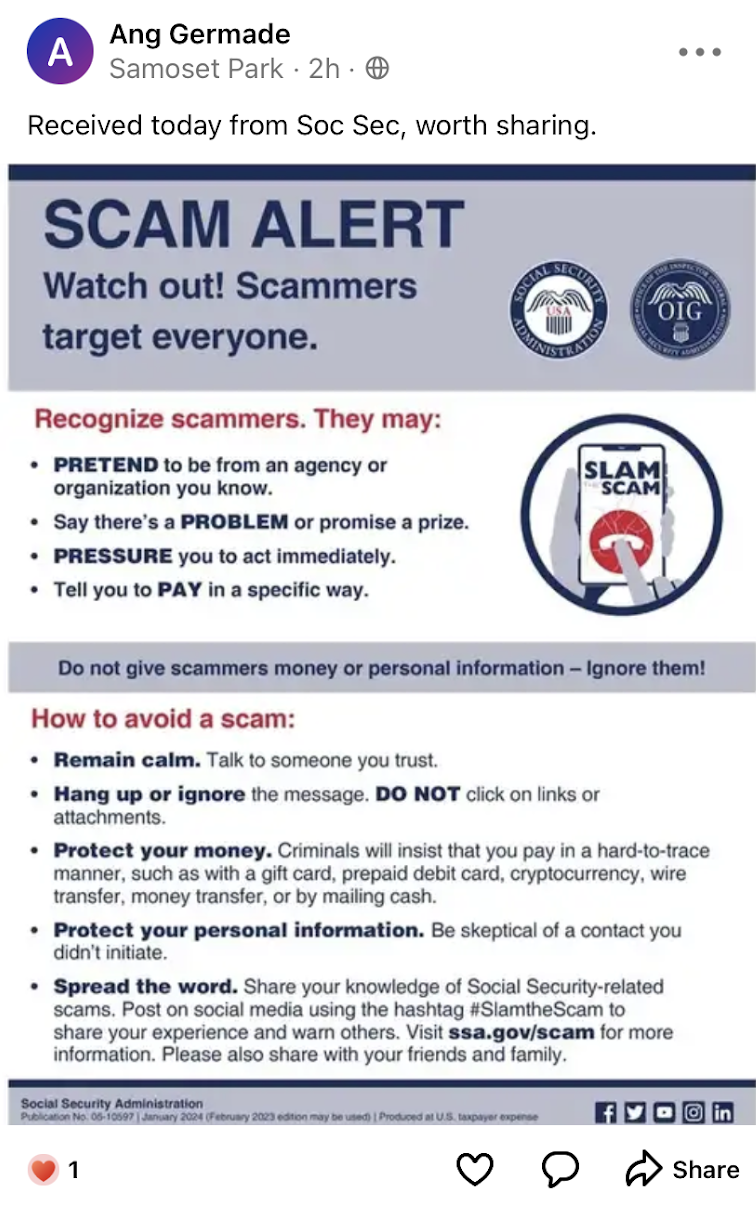
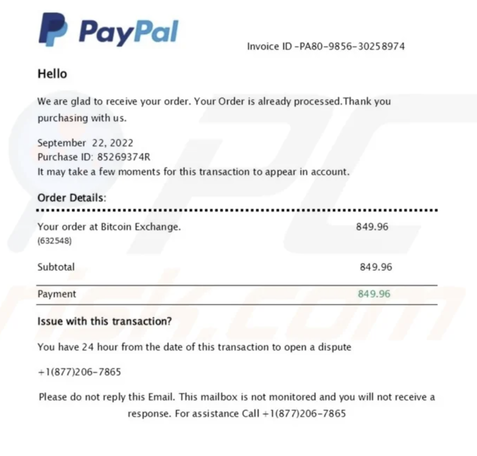
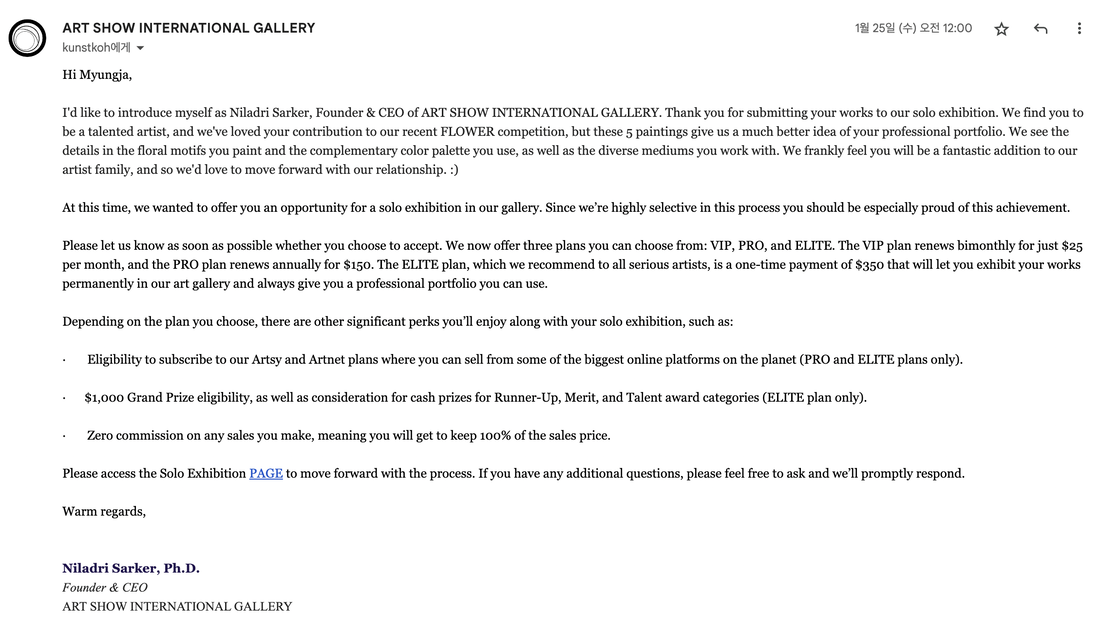
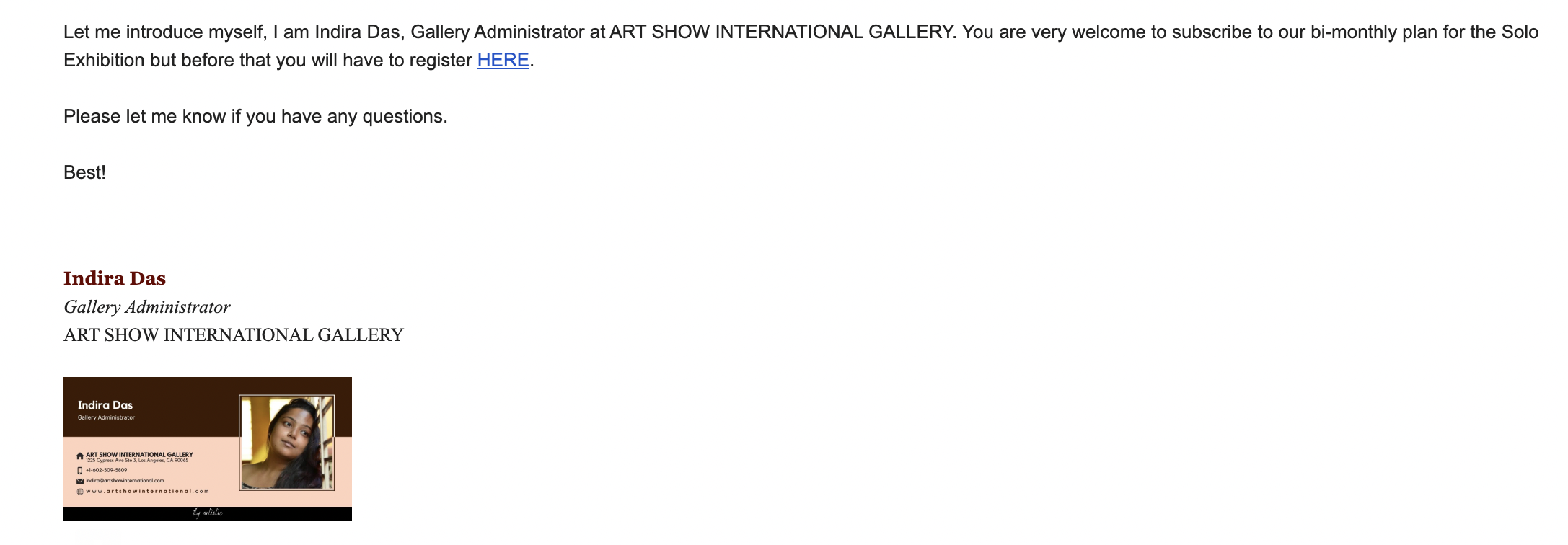

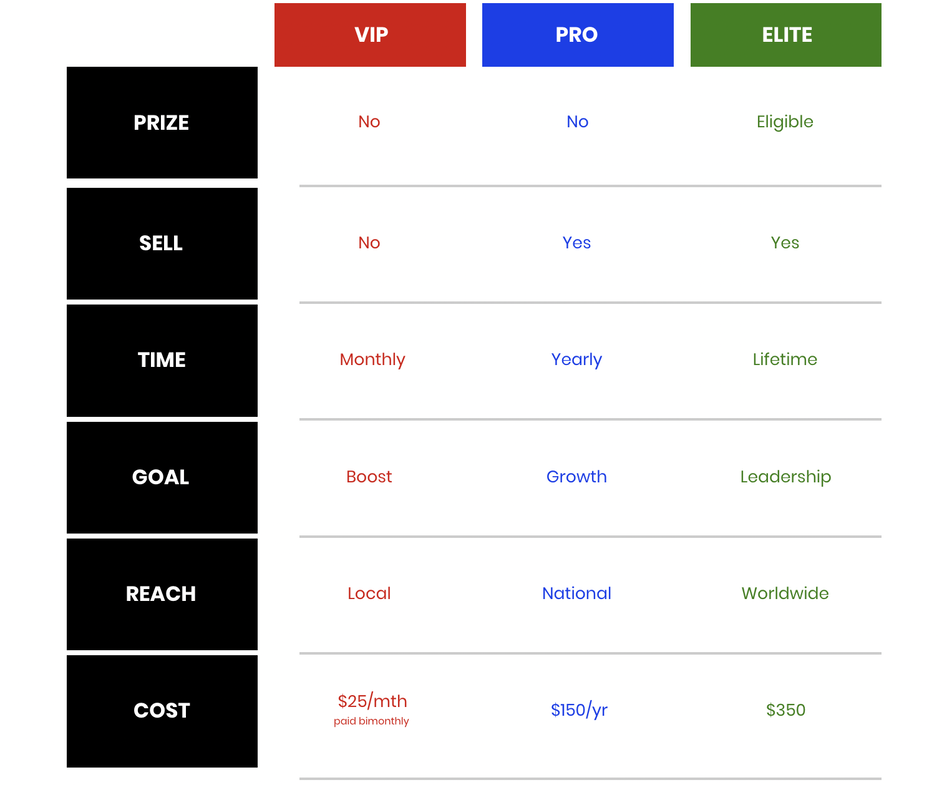
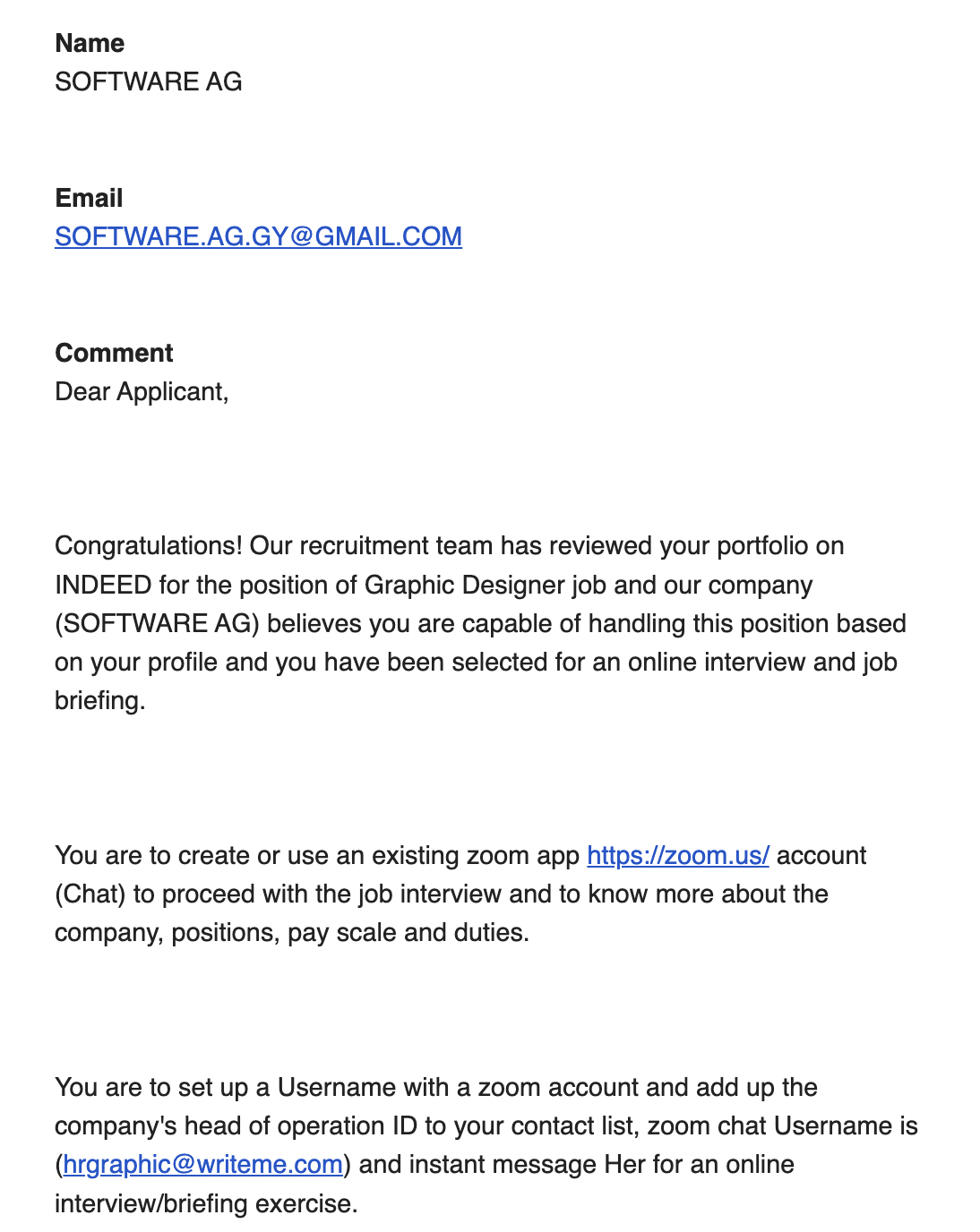
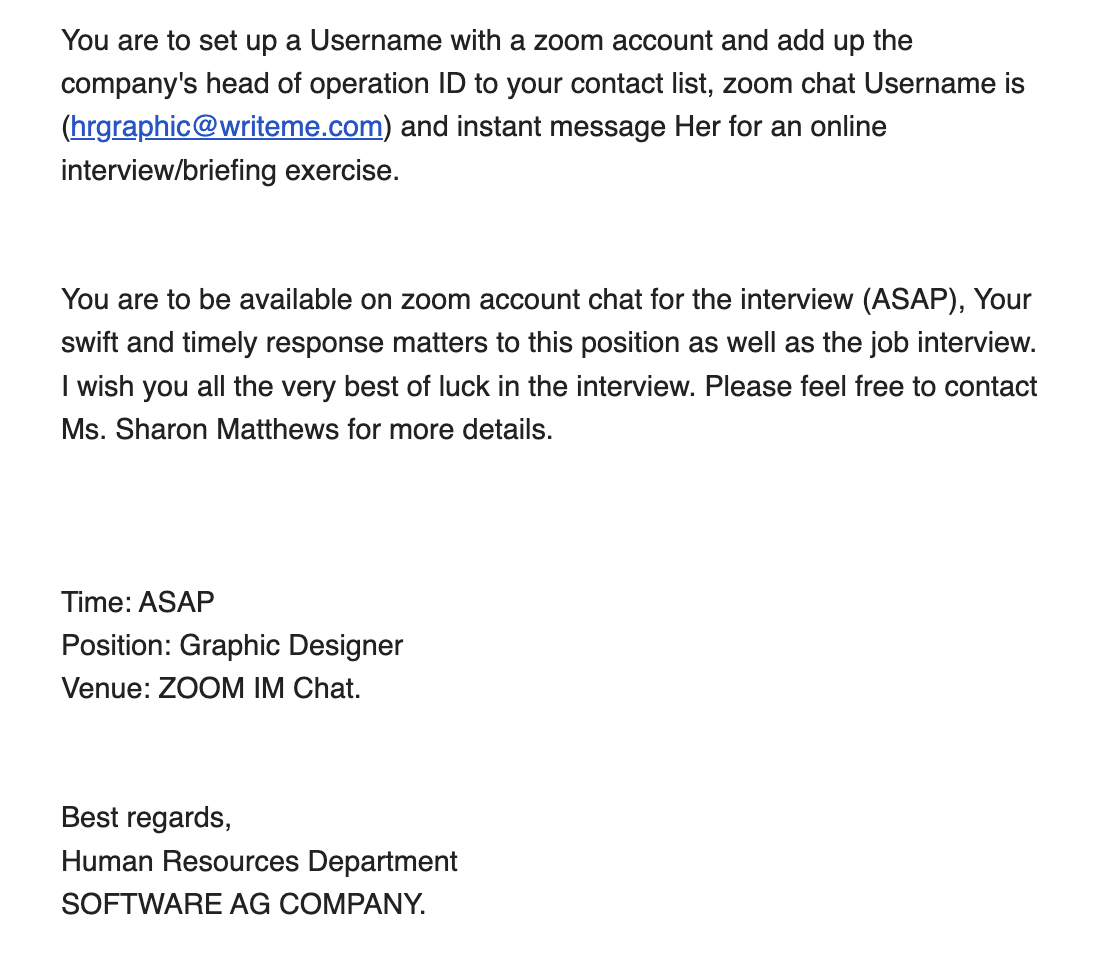

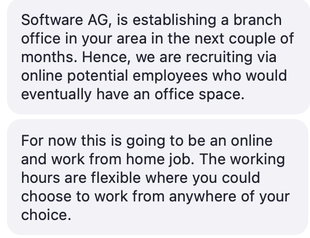
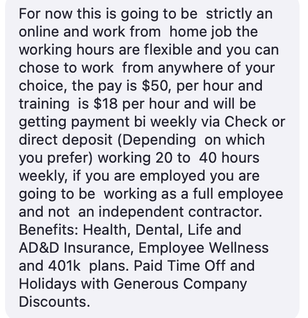
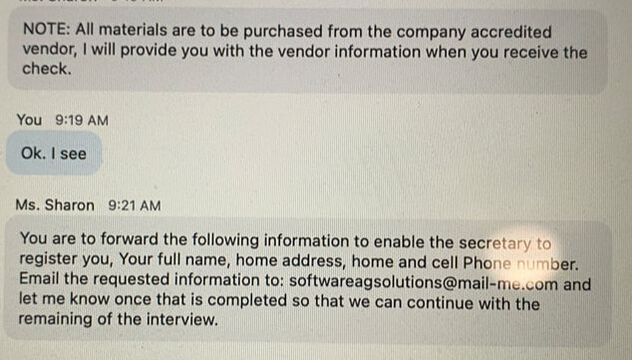

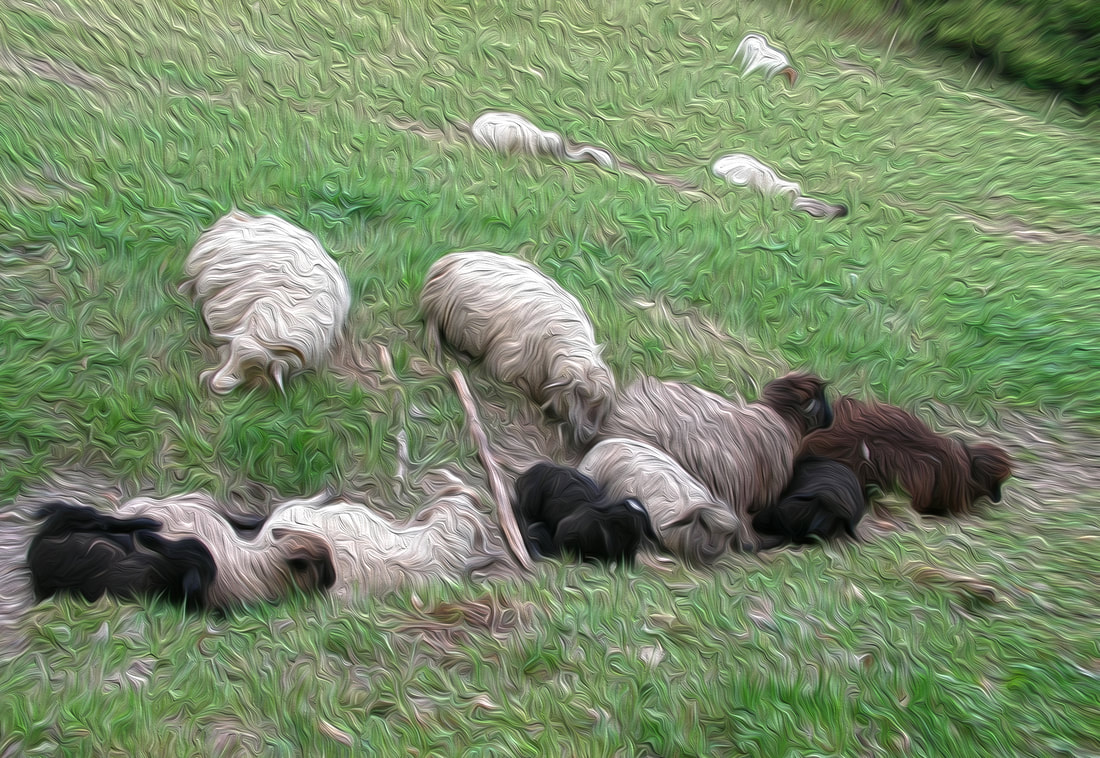

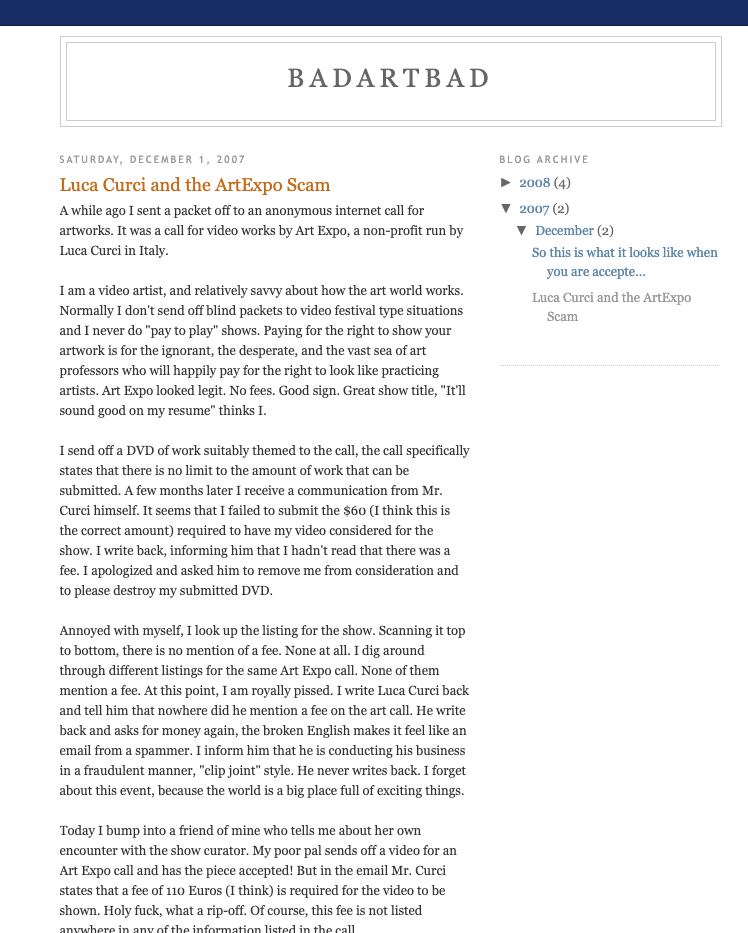
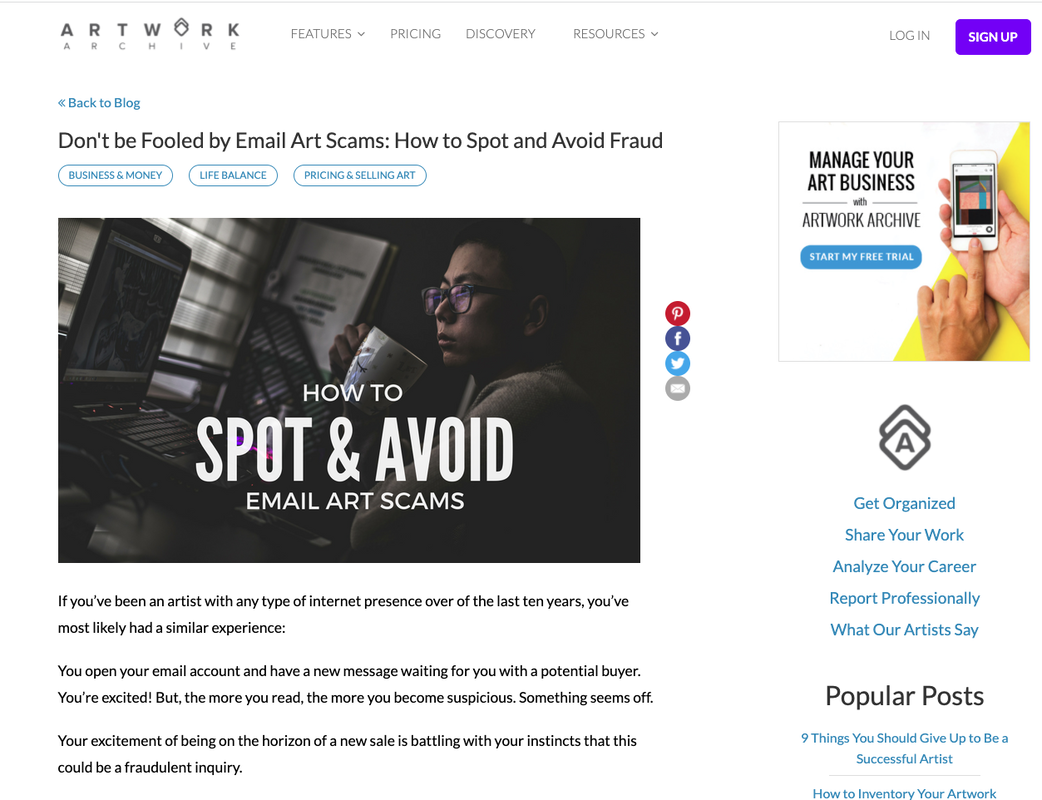

 RSS Feed
RSS Feed